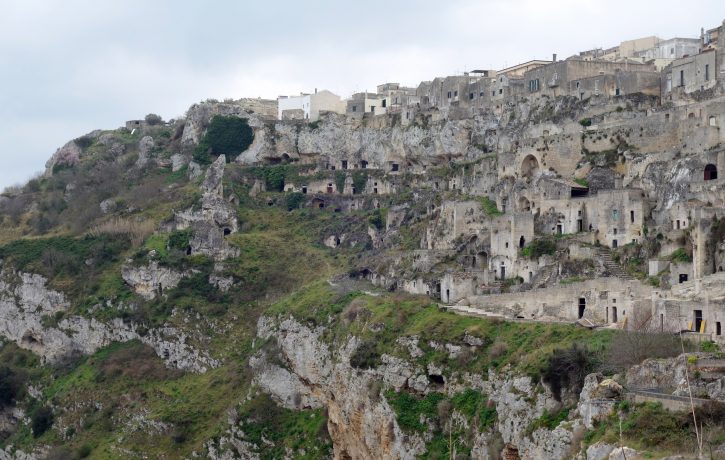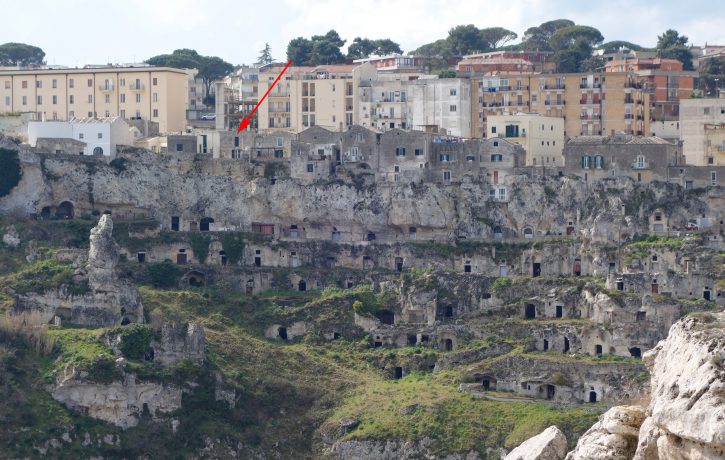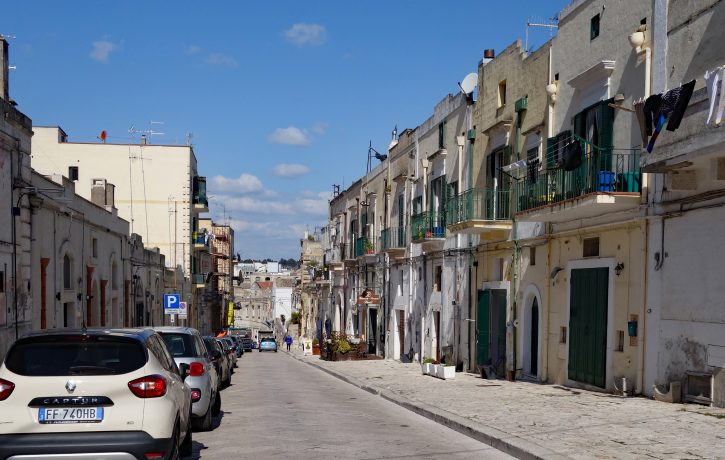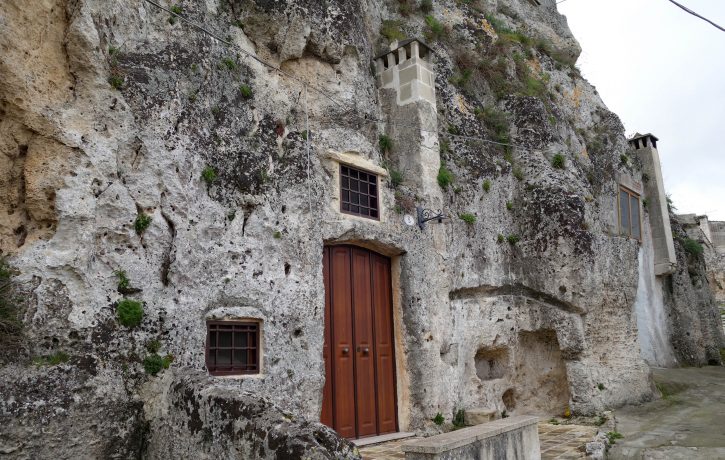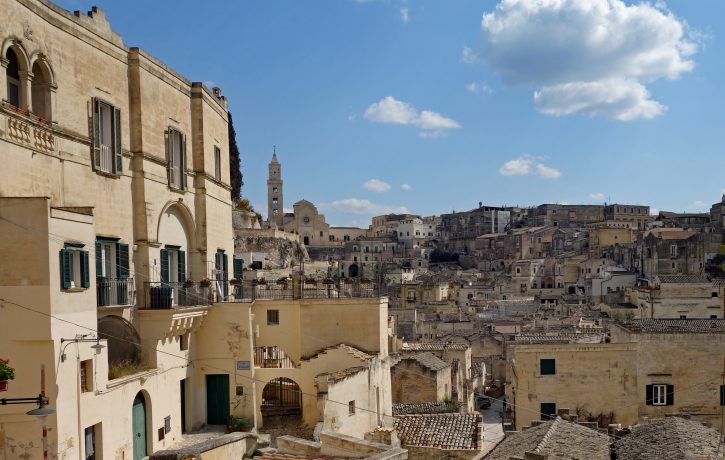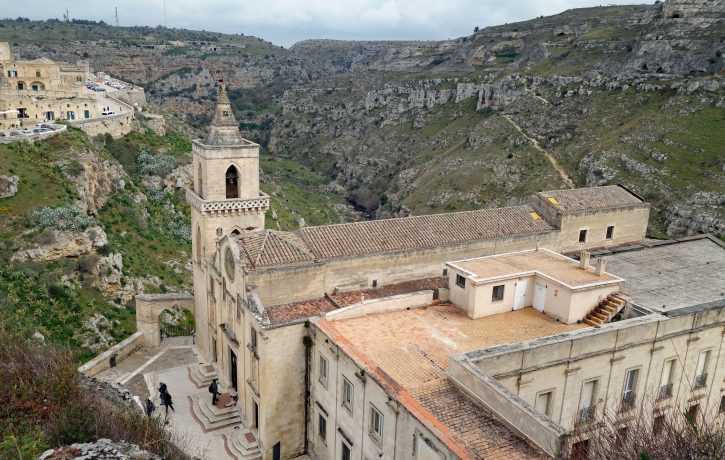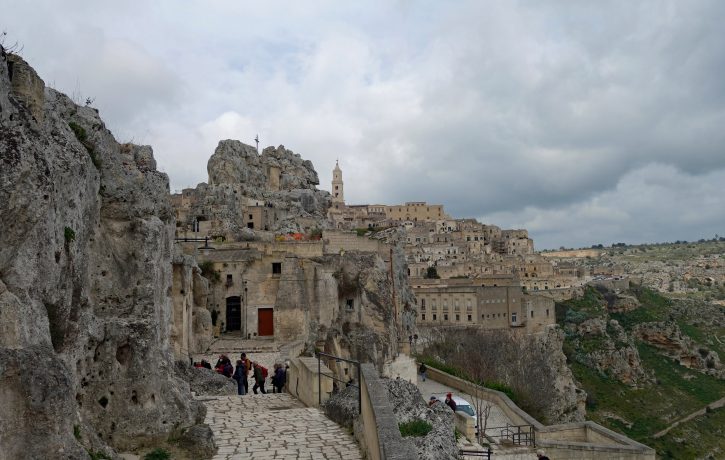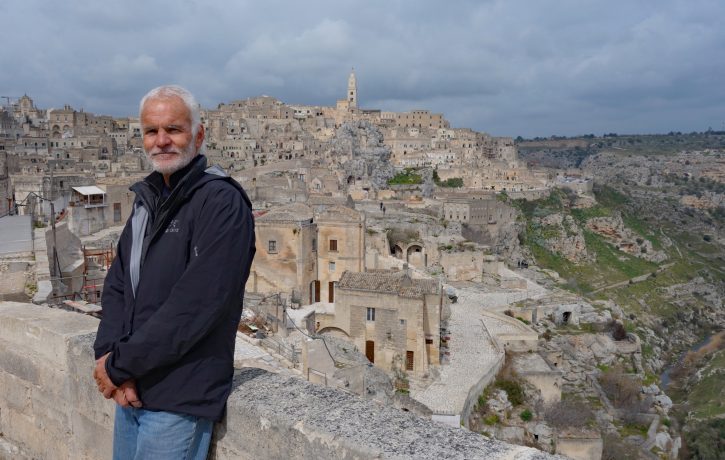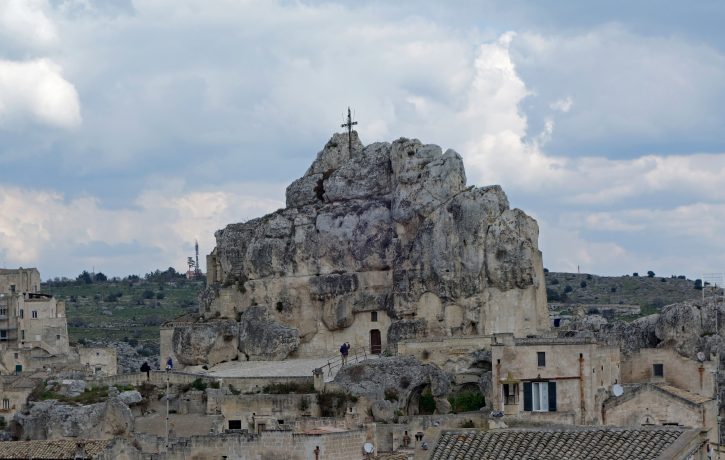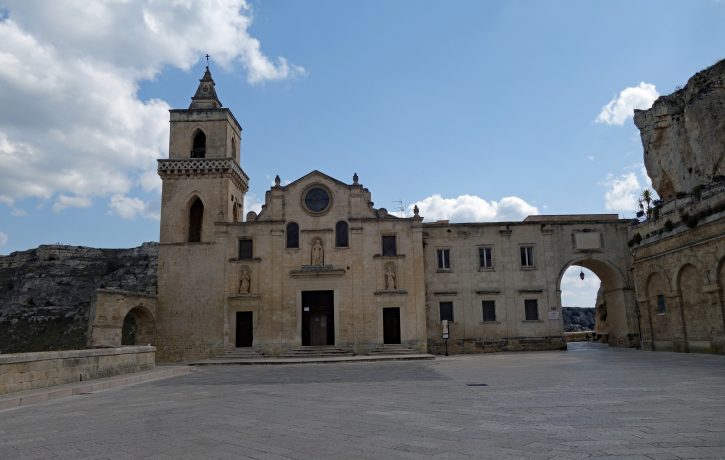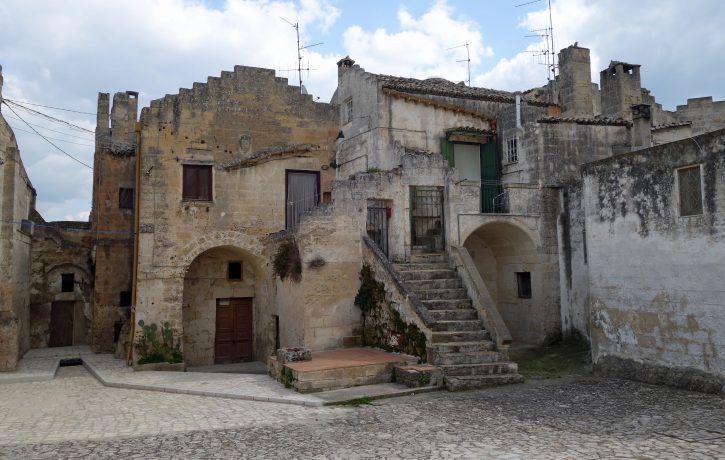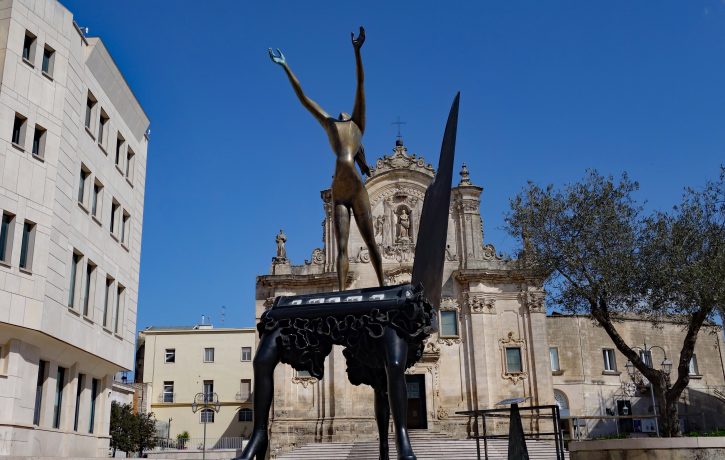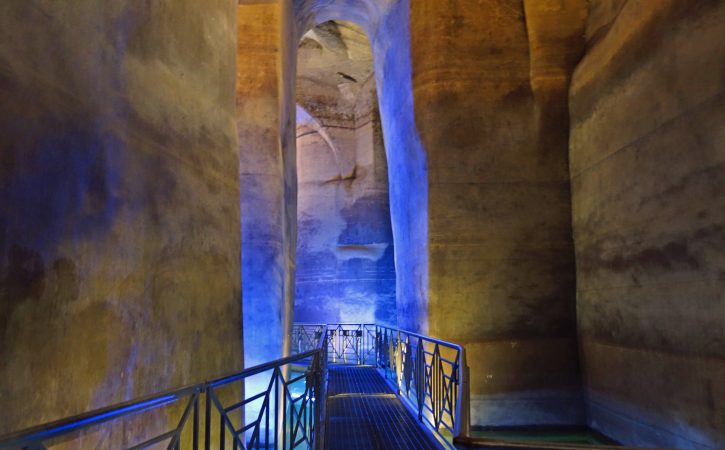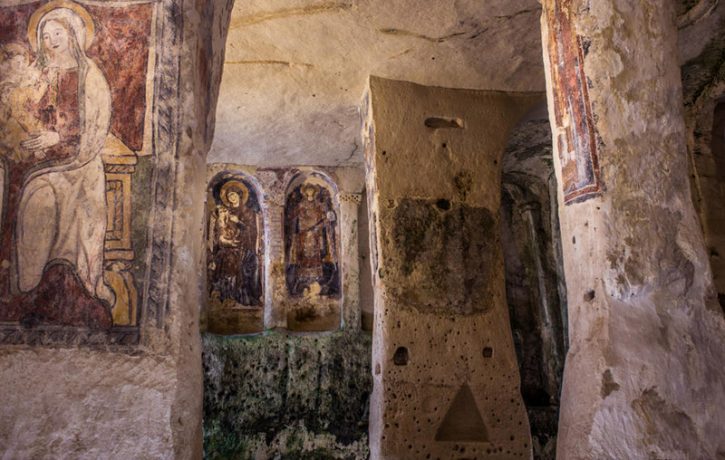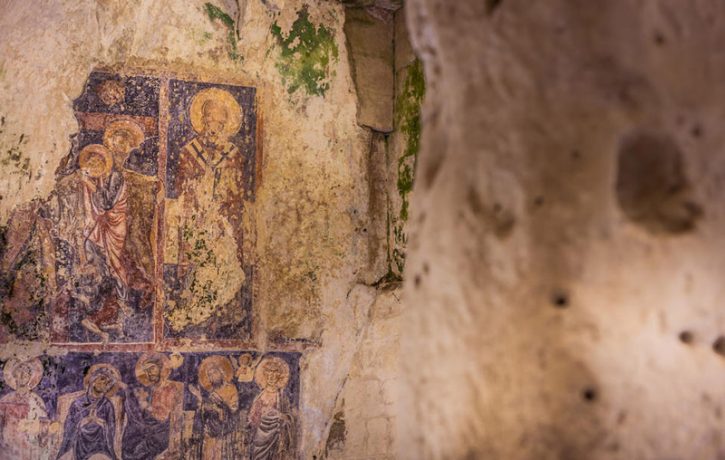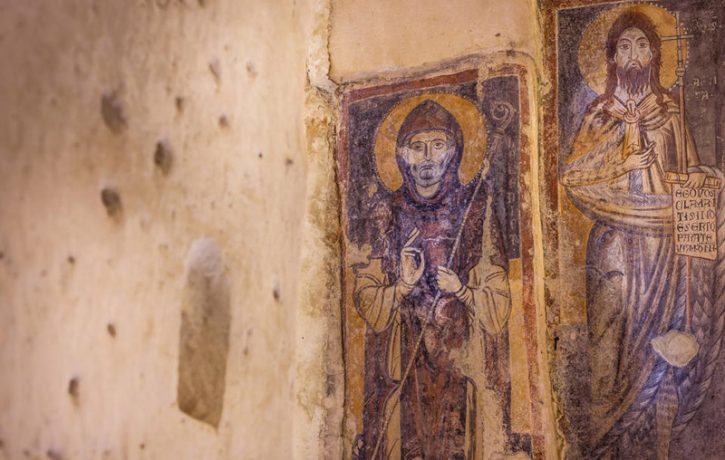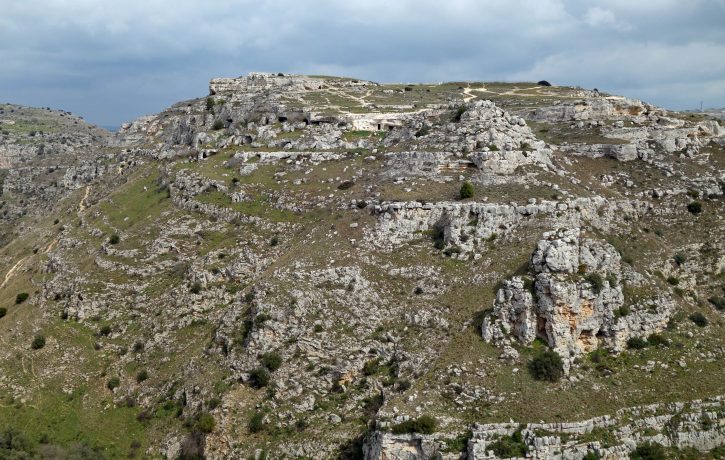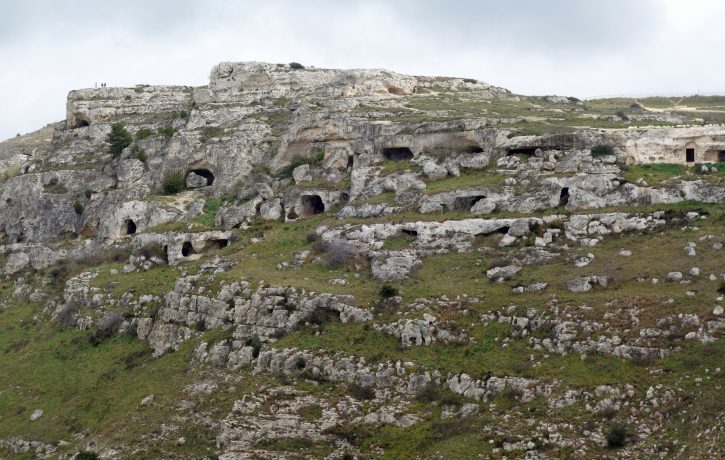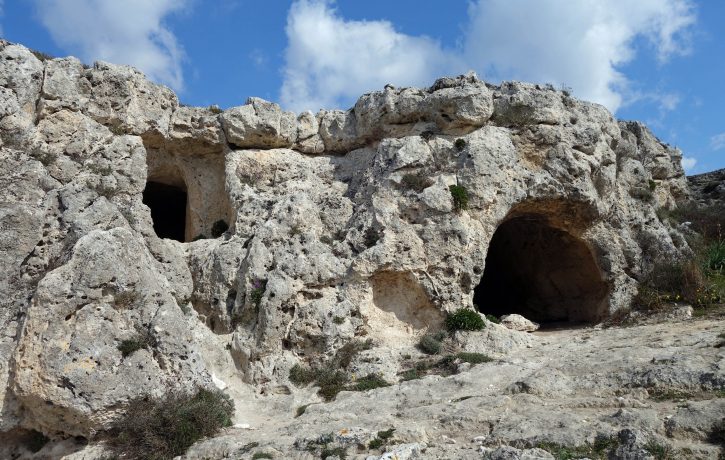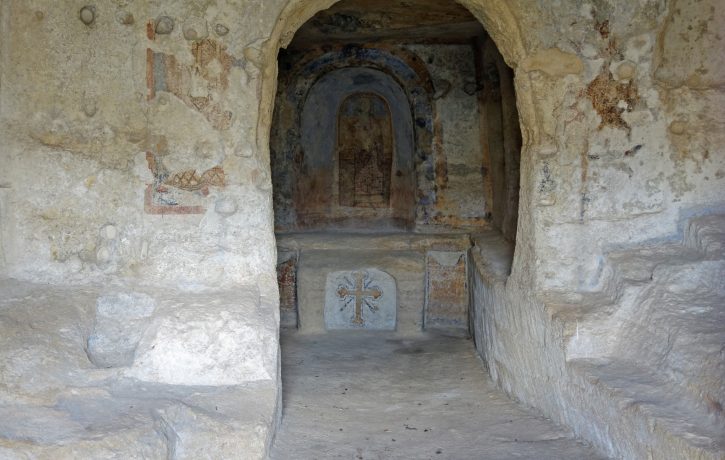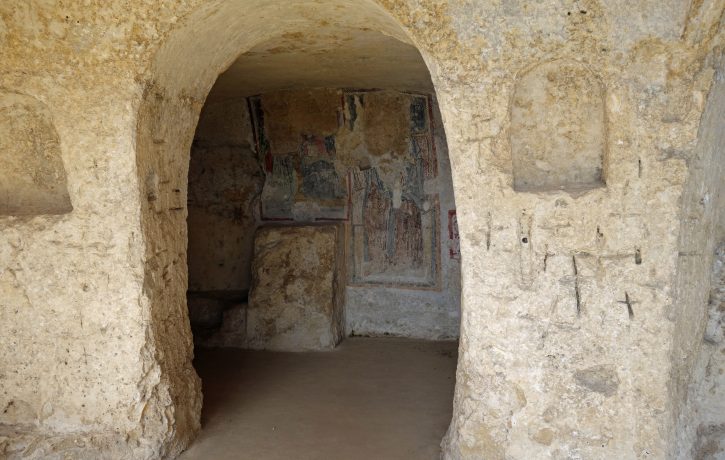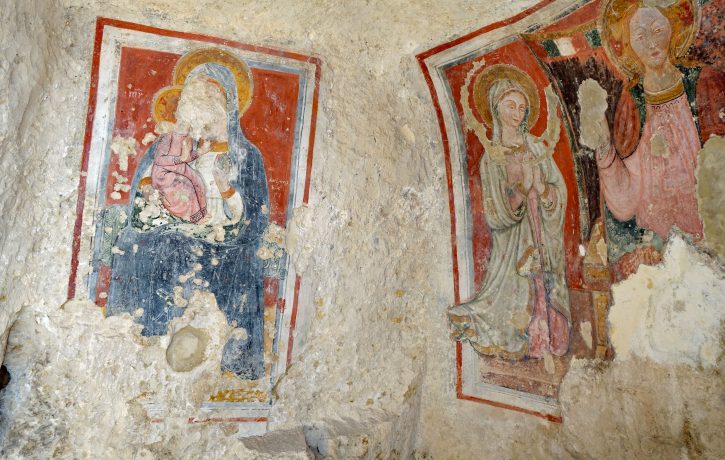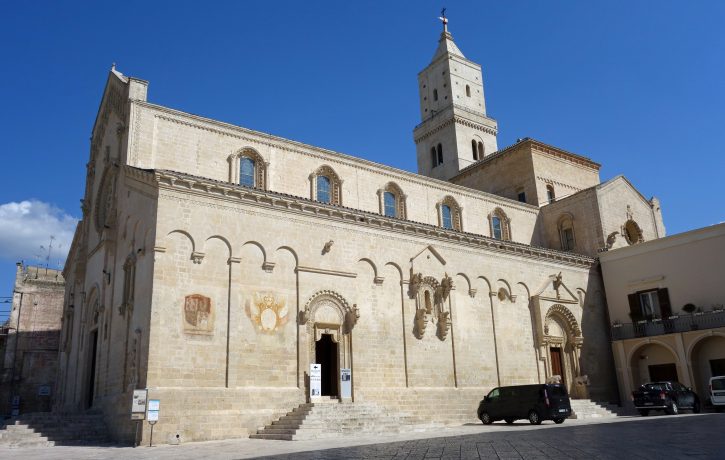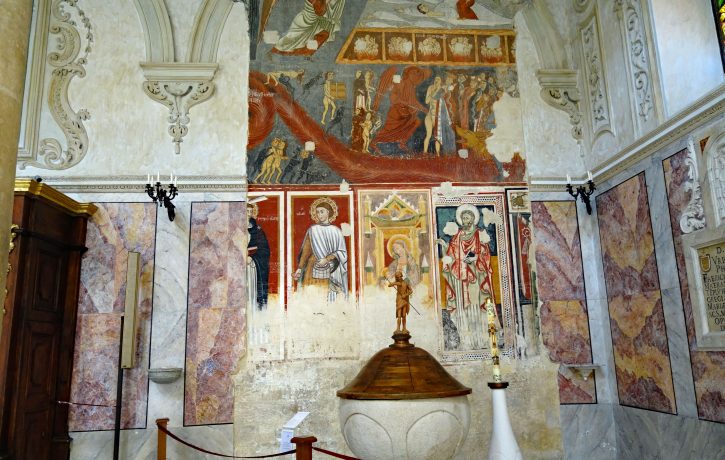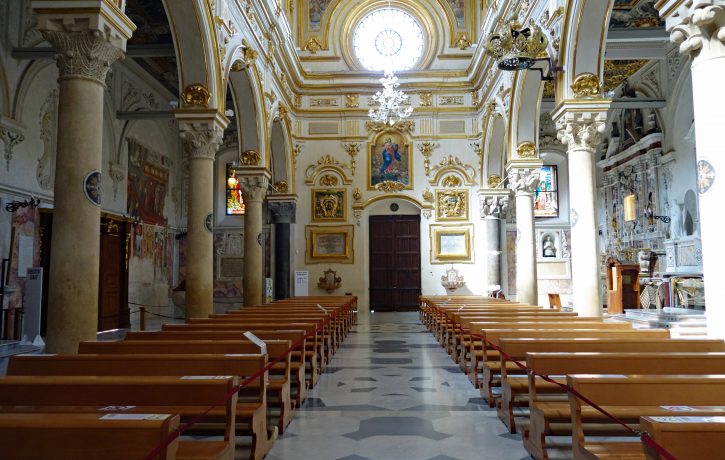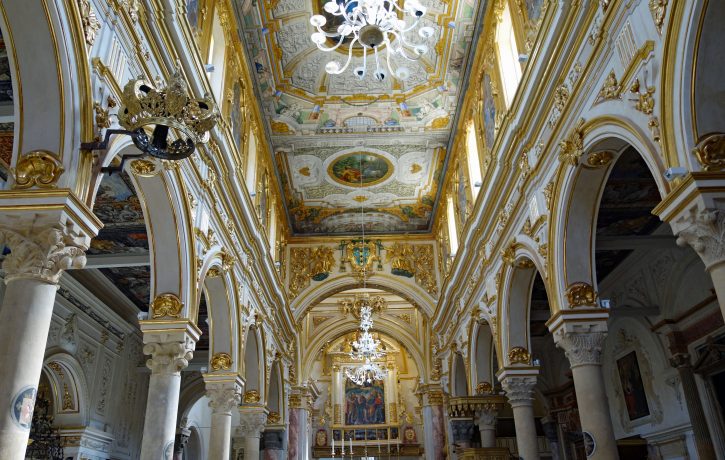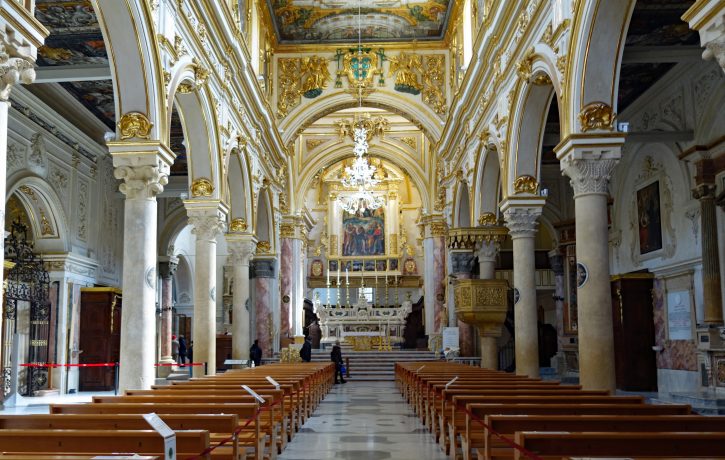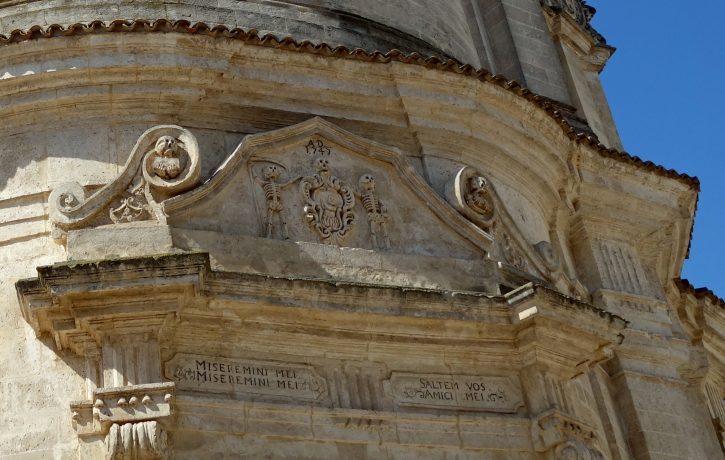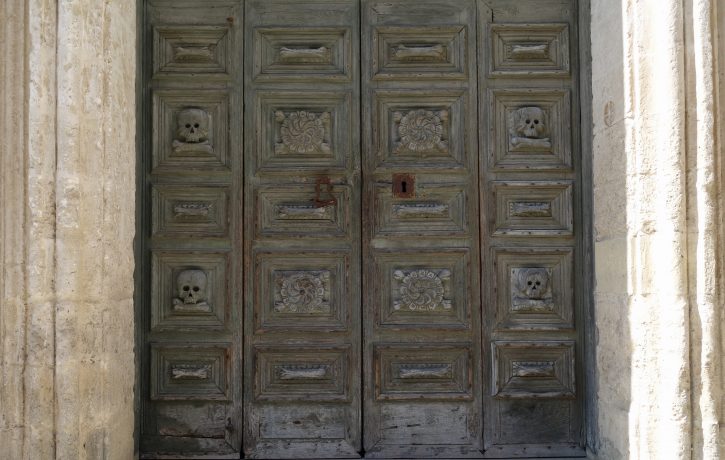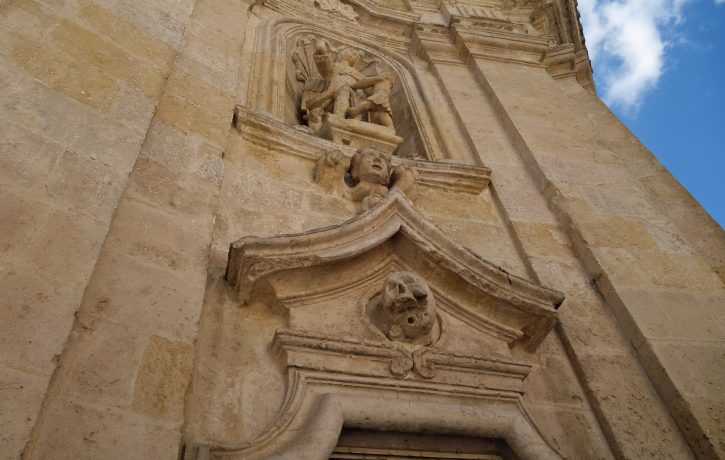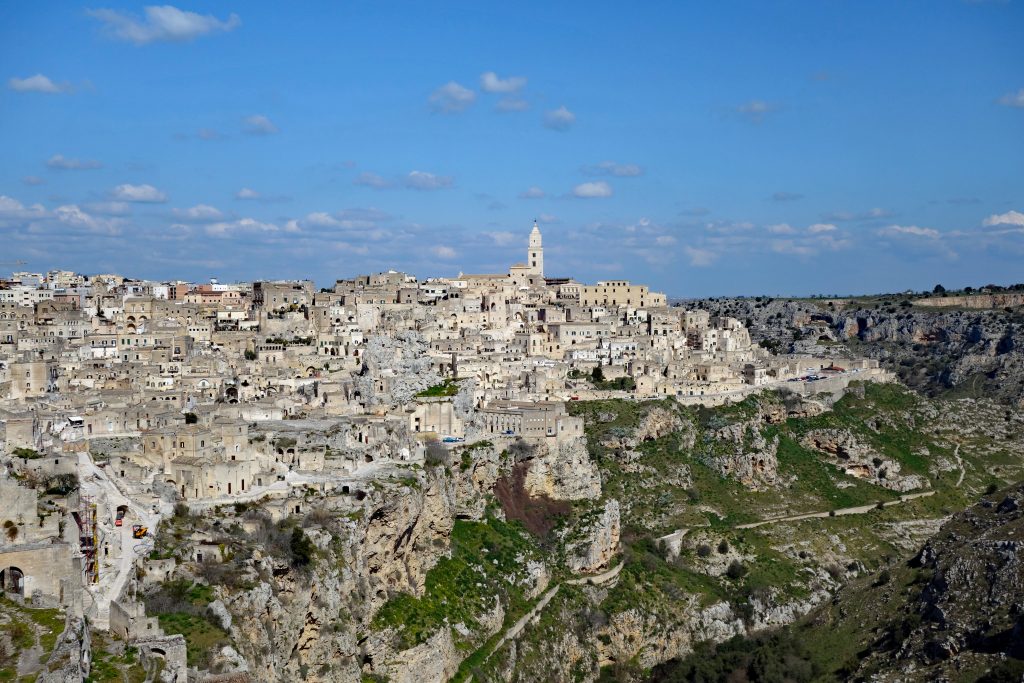
We left Sorrento destined for the Basilicata Region and the ancient town of Matera, the 3rd oldest inhabited settlement in the world after Aleppo and Jericho. The districts known as the Sassi (Italian for the “stones”) is where some 1,500 cave dwellings are burrowed deep into the sides of a steep ravine. First occupied as early as 7,000 BC, the natural caves were expanded into the rock throughout the ages. Where else can you stay in a place that was first inhabited 9,000 years ago!! The Sassi of Matera is made up of two natural amphitheaters, to the northwest the houses are largely palaces and traditional houses, the southern area is mostly made up of cave houses.
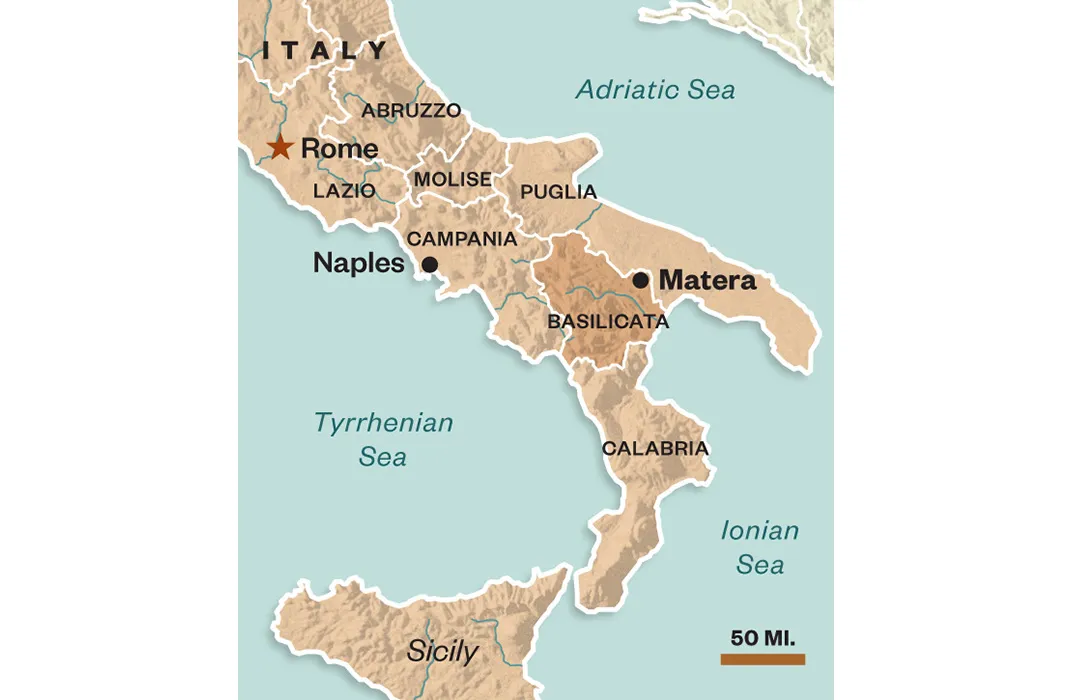
During the 1950s the government of Italy forcefully moved the entire population of roughly 16,000 people out of Matera due to poverty and unhealthy living conditions. However, some people continued to live in the Sassi and until the 1980’s it was considered an area of extreme poverty with the majority of the cave dwellings uninhabitable.
In 1993 UNESCO declared the Sassi a World Heritage Site and since then tourism has regenerated the town and it is now one of the fastest-growing in Southern Italy. Today there are thriving businesses, cave pubs, cave hotels, cave restaurants, and numerous cafes. Wandering the narrow streets on top of the cliffs we saw a fair number of tour groups, a good sign for the region this early in the year. Staying in a cave-dwelling is a popular new experience here, and one we experienced in Cappadoccia, Turkey a few years back. This time our apartment clings to the top of the ravine giving us spectacular views towards the town center. Below us are 3 or 4 levels of cave dwellings, dug out of the rock around 1450 by Albanians. Very few are inhabited currently but renovations seem to be happening around some of the upper levels.
Looking around the town it’s easy to see why Matera has been chosen to double for ancient Jerusalem in many films such as Mel Gibson’s “The Passion of The Christ”. More recently the city was featured in the 2021 James Bond film “No Time to Die” which we coincidentally just watched on our flight here to Italy. Already, there are guided James Bond tours of the town and we even recognized a few locations from the movie!
In the past, the Sassi water system was made up of a network of channels and cisterns to bring water everywhere. During the 16th century, an enormous cistern complex was dug in the soft limestone rock underneath the main plaza with chambers 50 feet deep and 240 feet long, capable of holding 5 million liters of water. The cistern was abandoned and closed in 1927 when an aqueduct was built to bring running water to the population. The existence of the cistern was known and in 1991 it was opened and explored by scuba divers. The Matera cistern is the second largest, after the Basilica Cistern in Istanbul and like Istanbul visitors can follow a metal walkway through the cistern complex. This cistern is not nearly as big or extravagant as the Istanbul cistern but was an interesting visit non the less. Tickets to enter the Palombaro Lungo cost 3 Euros ($3.30 USD) each. I got the impression that during the busy season you could only enter with a guided tour, but this early in the year we were just shown the entrance 😀
The Santa Lucia alle Malve is a rock church dating back to the 9th century. It was used by the Benedictine order as a place of worship until 1283. The chapel portion has always been the chapel but the other rooms of the cave have been used as housing for families and their animals over the years, up to as recently as 1960. Portions of the scarred walls are adorned with the faded remains of frescoes dated between the 11th and 17th centuries. Tickets cost 3.50 Euros ($3.85 USD) each to enter this 3 room cave and we were fortunate that the ticket taker was interested in answering our questions and sharing with us some interesting history of the cave. The below photos are from the internet since picture taking is banned inside the church.
Across the ravine from Matera is the Parco Della Murgia Materana (the Natural Park of the Rock Churches of Matera) which was nominated as a UNESCO World Heritage site in 1993. This park is spread across some of the most spectacular rock scenery in the world. There are over 150 rock churches with centuries of history, some of them dating back to Roman times. The churches are richly decorated with frescoes that have stood the test of time hidden inside the caves. Two noteworthy churches in the park with ancient frescoes are Chiesa Sant’Agnese dating from the 5th and 6th century and Chiesa Madonna Delletre Porte from the 12th century. The park includes signage to some of the significant features, but in general, we were free to clamber around the rocks and explore whatever caves we found. There is no fee to enter the park and it was much more interesting than we had anticipated, its worth a visit if you are in the area.
The Matera Cathedral dates back to the 13th century with its bell tower dominating the Matera skyline. The church is located on the highest point of the old city between the two ancient districts of Matera. The plain Apulian Romanesque exterior is a sharp contrast to the rich Baroque interior of stucco, sculptures, frescoes and gilded ceiling. In one corner a surviving fragment of a medieval fresco of the Last Judgement is partially exposed and in another corner, an ancient ruin with frescoes has been found below the floor. The cost to visit the Matera Cathedral is 1 Euro ($1.10 USD) per person.
Just outside the Sassi area we walked past a peculiar 18th-century baroque church adorned with skulls, skeletons, and other death-related decor. The Chiesa del Purgatorio was constructed as a place for people to pray for the souls trapped in limbo between heaven and hell. The wooden door is divided into 36 squares and decorated with skulls of nobles and clergymen and below them, skulls representing common people. Some bones also adorn the other squares of the door, with skeletons and other unusual carvings on the exterior walls which caught my attention as we walked by.
There is a tremendous amount of history, and a lot of churches, in Matera. Our 4-day visit barely seemed to scratch the surface but it was a good introduction to the area and local cuisine. We had time to relax in our lovely apartment and enjoy the views over the ravine without rushing around trying to see everything in a day or two. If you visit Matera, take your time to wander all the hidden lanes and endless stairways taking you up and down the cliffs along all the levels of cave dwellings. It’s a fascinating piece of history!!

Trip Tip
I recommend staying outside of the town along the ravine where the views are spectacular and ever-changing depending on the angle of the sun shining on the buildings.
